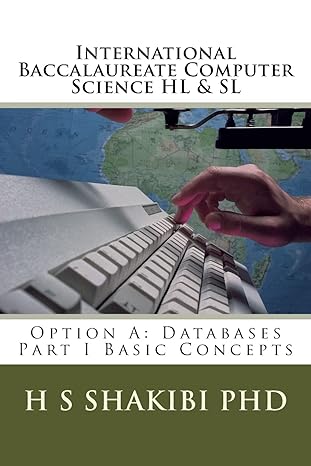Question
1. A set S contains n elements. How many possible subsets can be formed from S(including Sand the empty set)? (Hint: you might want to
1. A set S contains n elements. How many possible subsets can be formed from S(including Sand the empty set)? (Hint: you might want to try a set with n= 0 elements and count the total number of subsets that could be formed. Then try n= 1,n= 2,n= 3 until you see a pattern start to develop.)
2. Let be an alphabet. Consider strings u,v,w. Prove that the concatenation operation is associative (i.e. (uv)w=u(vw)).
3.Let ={0,1}be an alphabet. Now consider/interpret as the set of all possible realnumbersRcontained on the interval [0,1] represented in base 2. LetLbe the language defined by the set of strings contained in Q(the set of rational numbers). Given a string in, describe an algorithm that will determine ifL(i.e. describe an procedure to either accept or reject ).
Step by Step Solution
There are 3 Steps involved in it
Step: 1

Get Instant Access to Expert-Tailored Solutions
See step-by-step solutions with expert insights and AI powered tools for academic success
Step: 2

Step: 3

Ace Your Homework with AI
Get the answers you need in no time with our AI-driven, step-by-step assistance
Get Started


